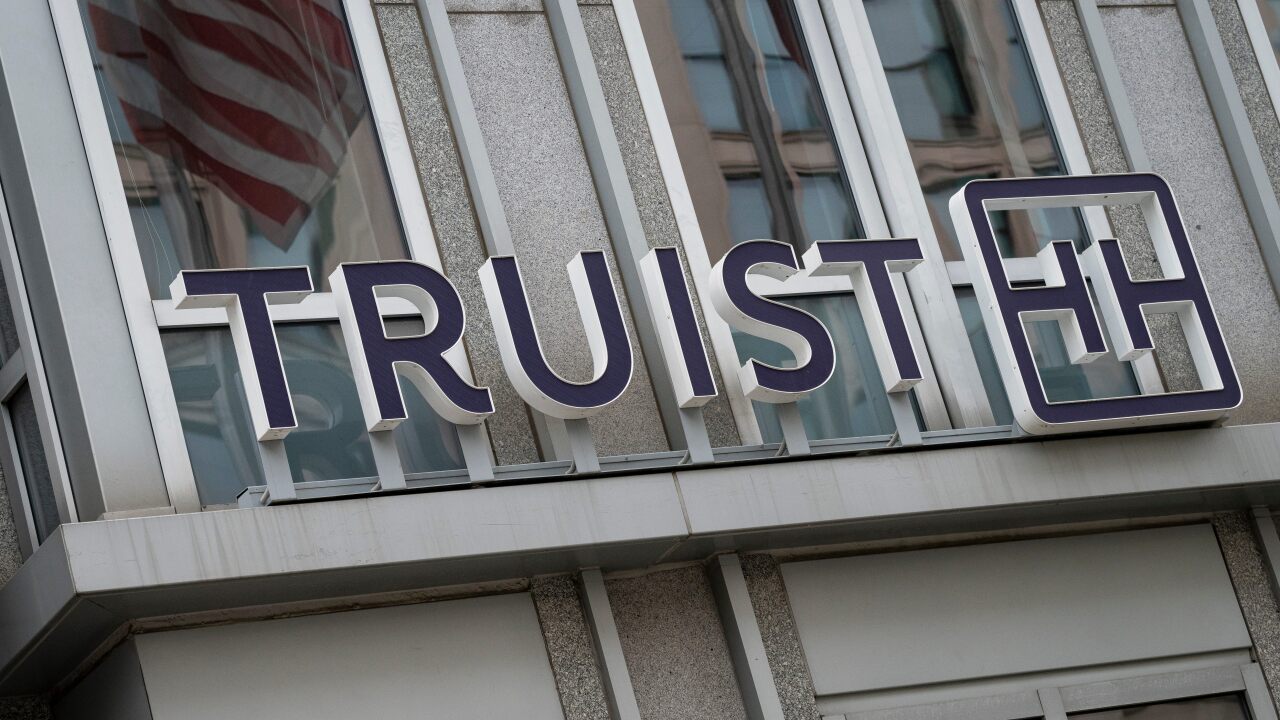Synovus Financial executives say they're focusing on growing their deposits after the Columbus, Georgia-based bank reported a decline last quarter and tapped other funding sources.
The bank's total deposits fell to $47.7 billion during the third quarter, a 3.5% drop from the prior quarter but essentially flat from a year earlier.
"We'll continue to focus on generating new deposits," said President and CEO Kevin Blair, pointing to the bank's treasury vertical as one source of growth. "We'll continue to focus on mitigating some of the diminishment that's happening."

About one-third of the decline was due to seasonal factors, while another large chunk was due to customers spending their cash or moving into non-deposit alternatives that Synovus offers. And about 20% of the decline was the result of customers seeking higher interest rates elsewhere as the Federal Reserve continued to raise interest rates quickly.
The company is nonetheless expecting to see deposits increase next quarter, though Chief Financial Officer Jamie Gregory also flagged the "highly uncertain environment on the deposit front."
Synovus has been showing "pricing discipline" on deposits, which helped keep its deposit costs down but also contributed to the outflows, Blair said.
The benefit of that discipline was clear in the company's net interest income — the difference between its interest income and interest expense — which grew 24% year over year to nearly $478 million. The net interest margin also grew to 3.49% in the quarter, up from 3.22% three months earlier and 3.01% a year ago.
Synovus executives said the company's deposit costs have so far stayed lower than expected, and the bank will also benefit from repricing its fixed-rate assets as Fed rate hikes continue. But they expect to see more pressure on deposits in the coming months, given that deposit costs typically lag the Fed's moves.
During the third quarter, Synovus tapped the Federal Home Loan Bank System for additional liquidity. Its long-term debt grew to $4.4 billion, up from $1.2 billion, which executives said was largely due to the increased Federal Home Loan Bank advances. Although the advances are classified as long-term debt, they can be canceled at any time, and their costs are more akin to very short-term borrowing, executives said.
Gregory, the CFO, said Synovus has ample liquidity sources, which can prevent it from having to issue more expensive debt. Increasing Home Loan bank advances, accessing brokered deposits and growing core deposits are all part of that equation, he said.
The $58.6 billion-asset company reported third-quarter loan growth across all categories, with total loans rising to nearly $42.6 billion, up 3% from the prior quarter and 11% from a year earlier. Multifamily commercial real estate loans, along with medical property loans, were the biggest contributors.
Loan pipelines "have diminished a bit," Blair said, reflecting some expectation of slowing growth among business owners, who generally remain optimistic.
"We're not seeing people that are overly concerned, but we're seeing a level of prudence, and people are being conservative," Blair said.
Synovus's net income grew to $194 million in the quarter, up 15% from the second quarter and 9% from a year earlier.
"This was a solid quarter for Synovus with favorable growth dynamics and good margin expansion," RBC Capital Markets analyst Jon Arfstrom wrote in a note to clients.
The company's stock, however, slumped on Thursday. Its price was down 7.36% to $38.28 per share in early afternoon trading.






